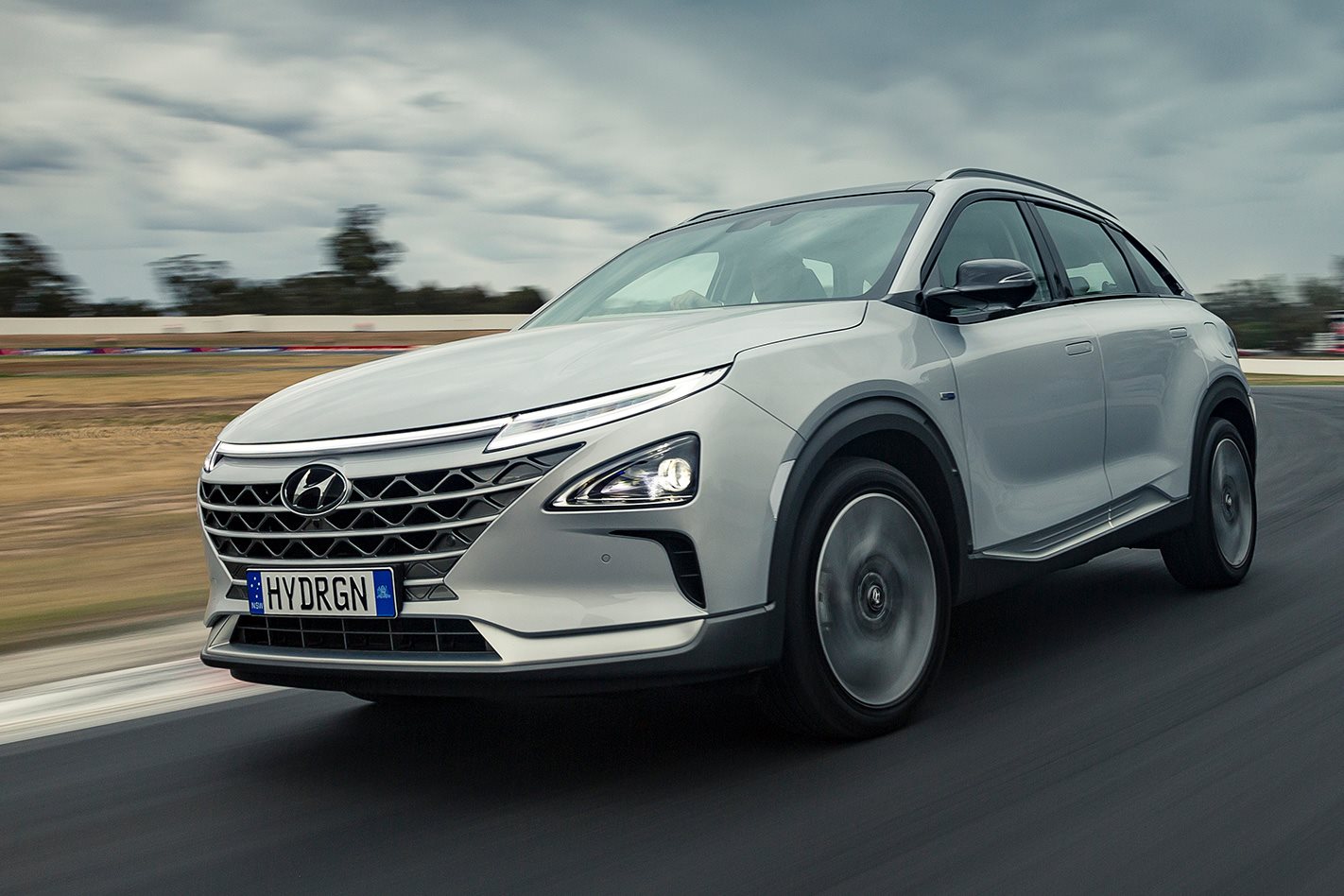ON THE face of it, powering a car with a hydrogen fuel cell endows it with all sorts of benefits. Its only tailpipe emission is water, it has the same silent tractability of an EV and it overcomes the biggest headache of a battery-powered vehicle in that it can be ‘recharged’ in mere seconds at a bowser. What’s more, you’re not forced to carry hundreds of kilograms of batteries everywhere you go.
Then you consider the process for getting the liquid hydrogen into your vehicle and wonder whether it’s really such a smart idea. The fuel requires a lot of energy to produce, and in Australia, that means coal-fired power stations creating the electricity required to drive the process. Then it will be transported in a diesel truck to a servo, whereupon you drive it around in your car, converting this expensively-created hydrogen back to electricity once again.
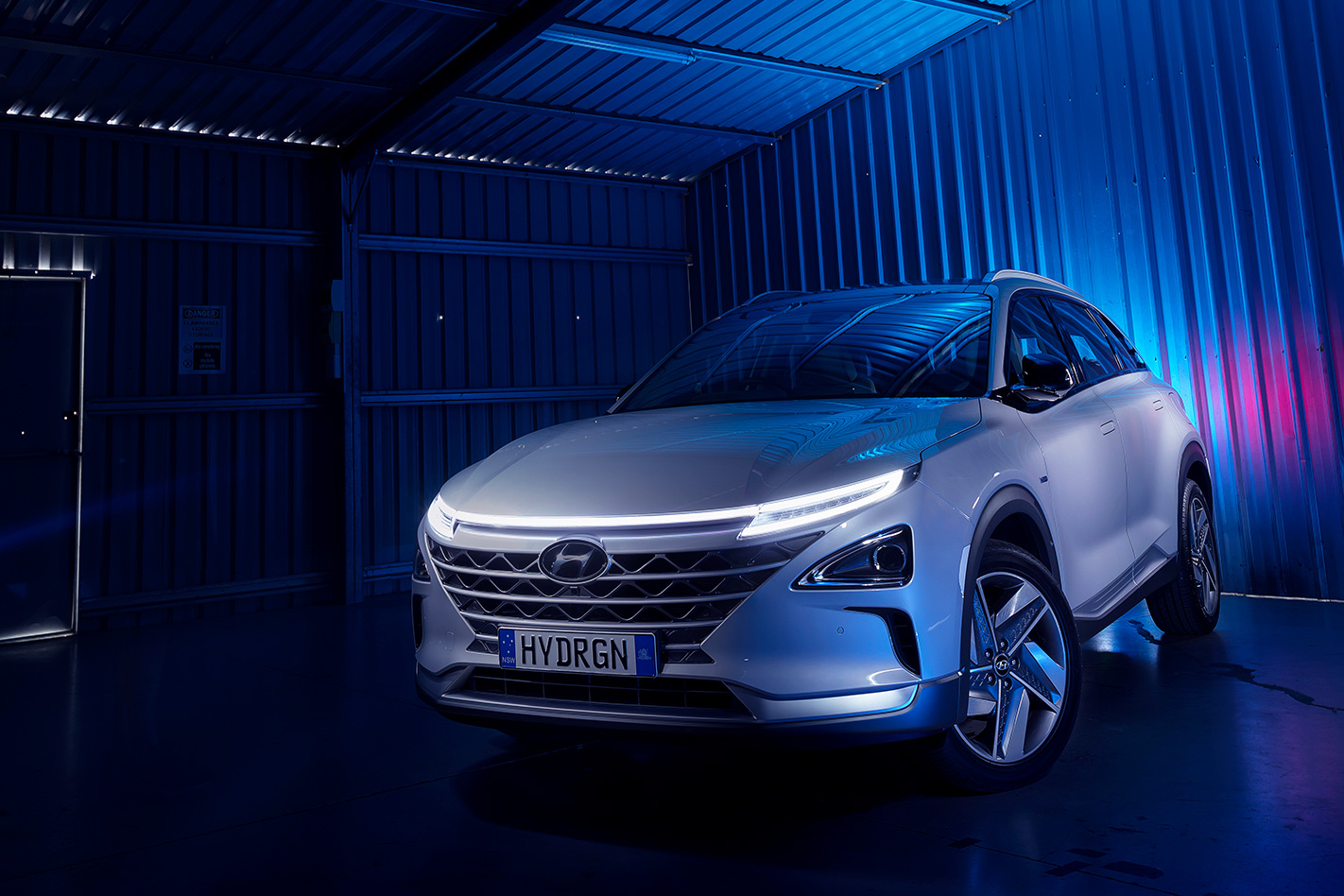
Until renewables like wind and solar contribute around 25 percent of the grid’s power – and in Australia it is hovering around 17 percent – it makes more environmental sense to put that energy to work replacing coal-fired capacity in the first place rather than using it to make liquid hydrogen. As it stands, it’s a poor displacement. Factor in the dollar cost of production and the fact that the only hydrogen bowser in Australia is, at present, located in Hyundai’s north Sydney HQ, and the tech looks like the most terminal of dead ends.
Drive Hyundai’s Nexo for five minutes, however, and you start trying to make the case for the hydrogen fuel cell. It feels like the future, a mobile motivational poster for overcoming all of the objections I’ve just mentioned. With some political gumption, they are all surmountable. We could go back and forth all we like about how the mining lobby skews the political agenda here, but at some point sooner than we think, Australia’s hand will be forced by international carbon dioxide obligations. When – not if – that happens, perhaps hydrogen-powered cars can step into the breach. Hyundai is already trying to subtly influence the decisions in Canberra, agreeing to supply 20 Nexos this year to the ACT Government as part of the Hornsdale Wind Farm project.
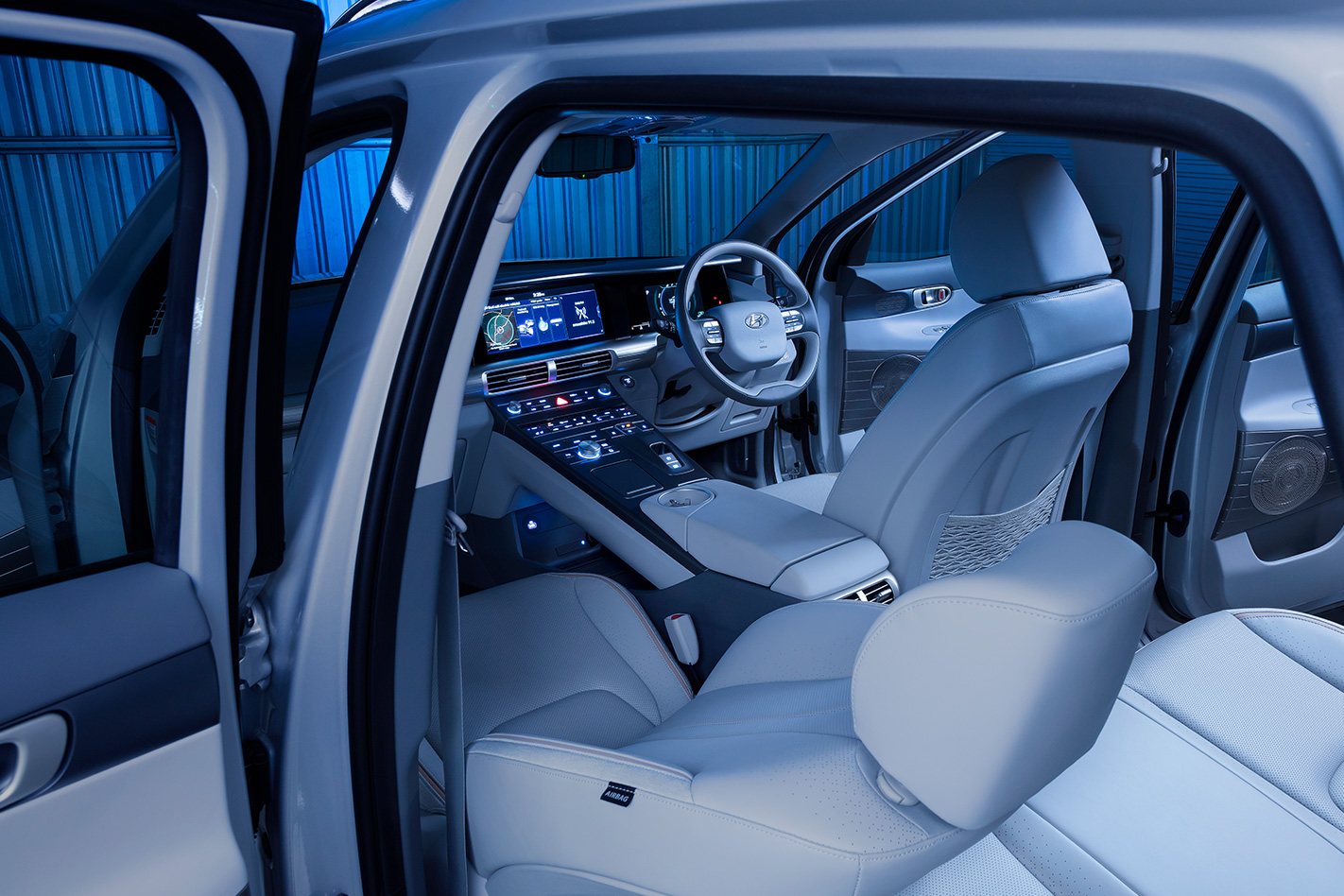
The Nexo is the Koreans’ second stab at a production FCEV (fuel cell electric vehicle). Its first was the ix35 FCEV, but since that car appeared in 2012 the technology has been refined, such that the Nexo now has a range of 800km, some 206km more than the old ix35 could manage on a tank. Power and acceleration have also improved. The fuel cell stack has been designed in-house by Hyundai, another example of the company’s formidable vertical integration. Another area where the Nexo moves the game on is in its cold start capability, admittedly of marginal benefit to most in this market. Of more interest is its hot weather ability that has also been improved, the car running reliably in temperatures exceeding 49 degrees Celsius.
At 4670mm long and 1860mm wide, the Nexo is almost as big as the seven-seat Santa Fe, but it sits lower and looks sleeker, shrugging off its generous sizing. Sit inside and you’d be forgiven for thinking you were in a Lexus product given its button-heavy centre stack, muted colour palette, large LED displays and ostentatious speaker grilles. The infotainment system is unlike anything I’ve seen in a Hyundai and responds to both prodding the screen and rotating/clicking a console-mounted dial.
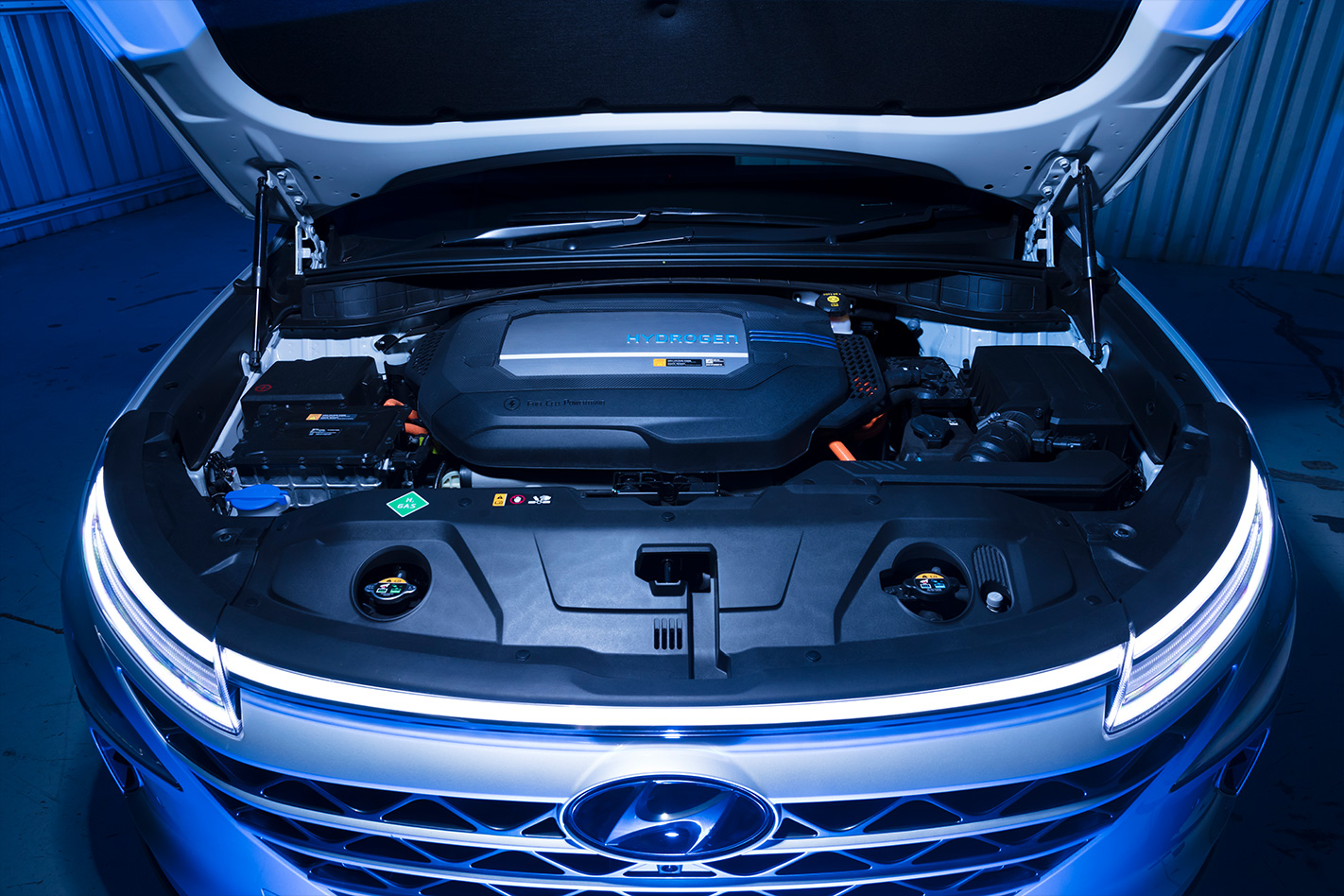
Unlike the old iX35 FCEV, the platform has been designed from scratch to accommodate the hydrogen drivetrain, so the three reinforced IlJin Composites-built hydrogen tanks (carrying a total of 156.6 litres, or 6.33kg, pressurised at a massive 700bar) are cleverly positioned in a way that doesn’t materially compromise space in the cabin. The three scuba-like tanks sandwich the rear axle, two ahead and one behind. Hyundai has fired armour-piercing bullets at the tanks to test their durability, so there’s little chance they’ll go up like the Hindenburg if you get involved in a bingle. It’ll seat five, will carry up to 839 litres of luggage with the rear bench folded and because it’s housing neither an engine nor a battery pack, Hyundai has enjoyed additional freedom in the way it packages this smaller and lighter fuel-cell drivetrain.
If you didn’t know it wasn’t a conventional EV, there’s little in the way it drives that would give it away. It sounds bizarre on heavy brake re-gen, like a 1950s sci-fi spaceship, and it fires water from its exhaust at quite an eye-widening rate when you really stand on it. Its system output of 120kW/395Nm will power it to 100km/h from standstill in 9.5 seconds, but the power generation capability of the car is 95kW from the fuel cell itself and a nominal 40kW from the battery located beneath the boot floor.
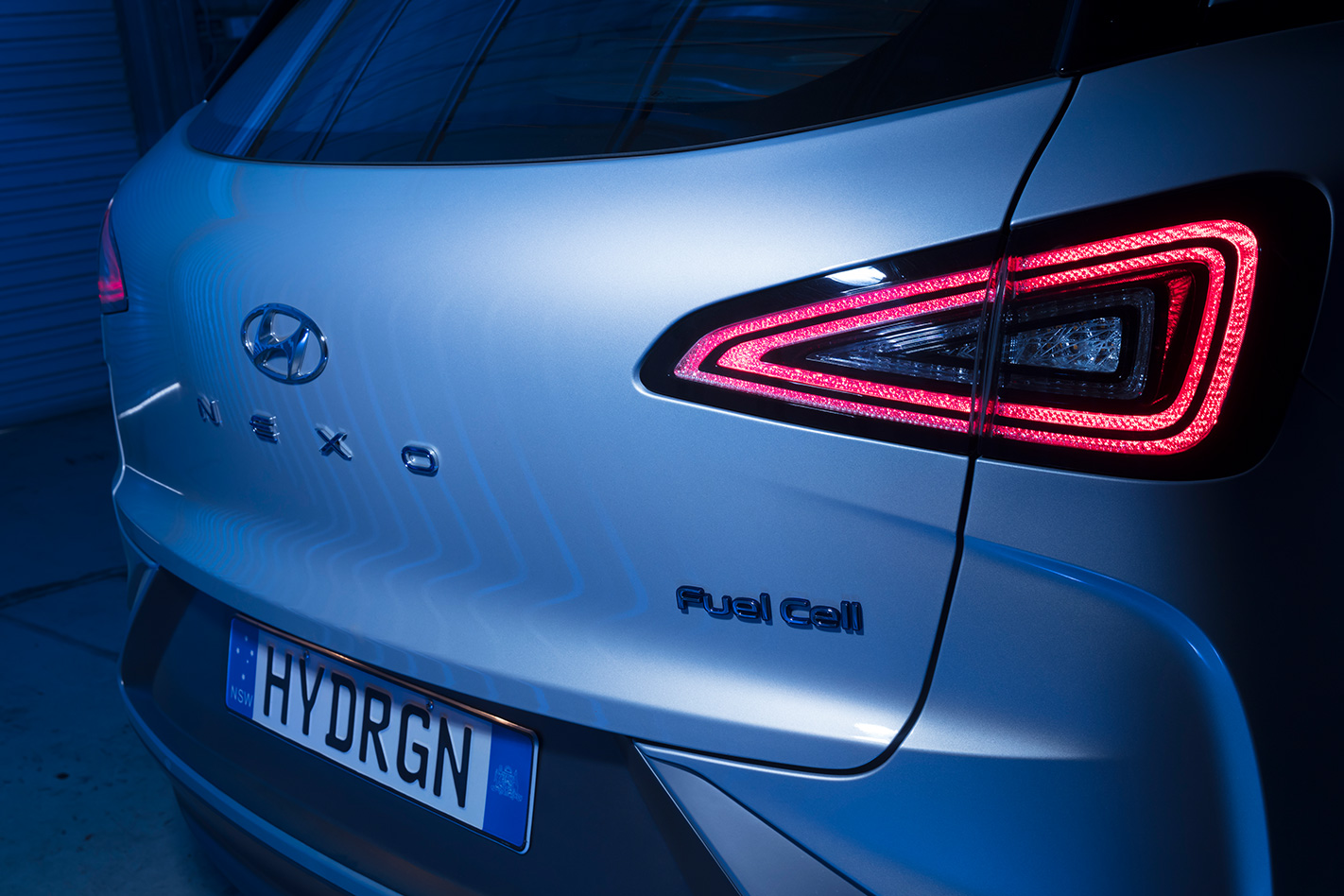
We only had the opportunity to drive this Nexo on track at Winton as it wasn’t road registered, so we didn’t get the chance to play with its formidable active safety and semi-autonomous tech. An 1814kg SUV is never going to feel at home on a race circuit, so it’s no great surprise that things get a bit understeery when you press on. The steering is odd too, with little feel and then a strangely ramped caster feel. Dial things back a bit and you can cycle through the four different re-gen modes accessed via the paddles. It’s likely you’ll settle on either Zero, which gives no engine braking, or the top level, Three, which is like a gentle brush of the brake pedal. Even in maximum re-gen, there’s not the ‘one-pedal’ driving feel that you can achieve in something like a BMW i3 or a Nissan Leaf, but it feels a bit easier to acclimatise to as a result. The recouped energy is fed into its tiny 1.6kWh lithium-ion battery.
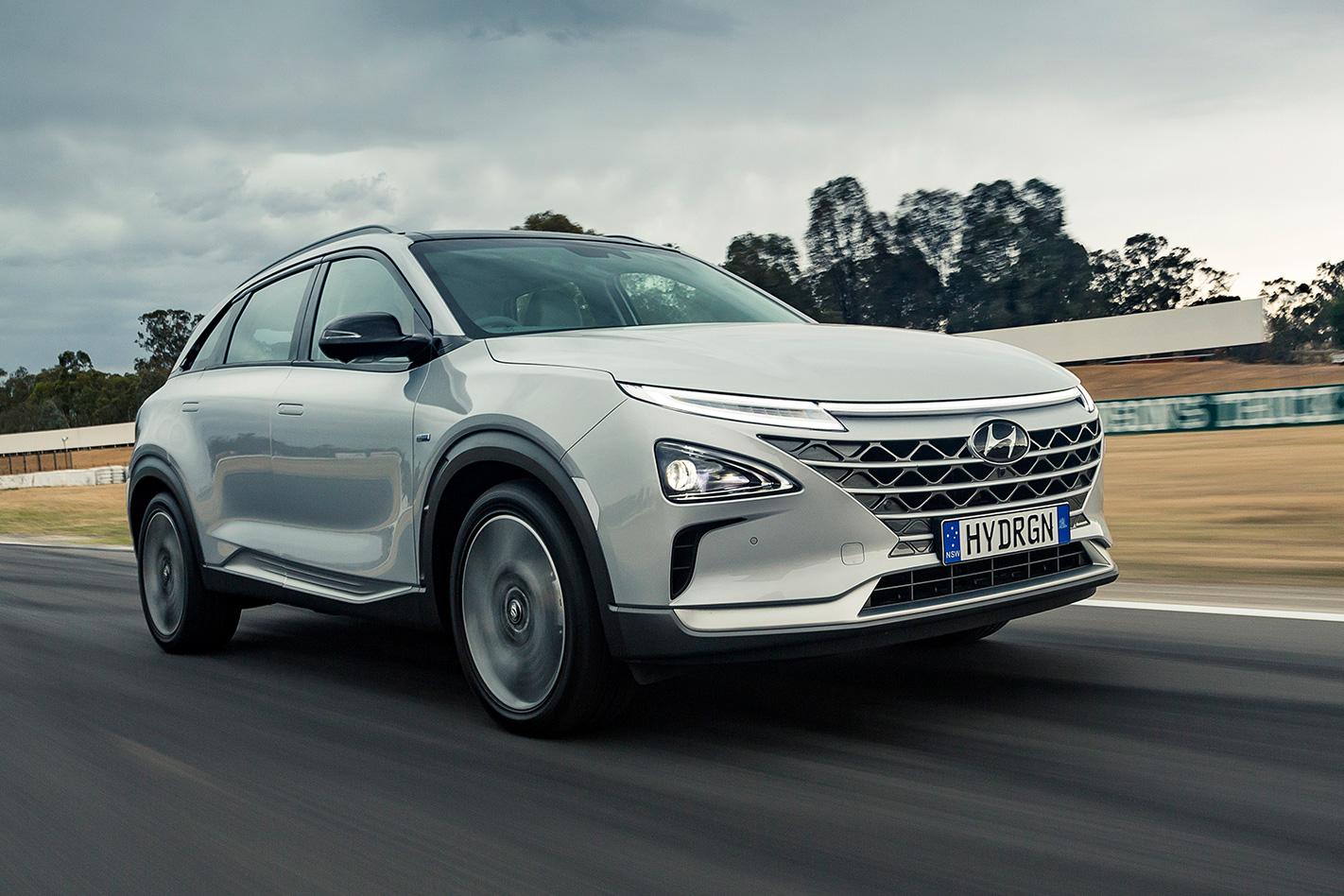
The thorny issue of pricing is another the Nexo must overcome. Were this a petrol-powered vehicle, it’d likely command a price tag somewhere in the region of $60K. Hyundai tells us that although local pricing has yet to be confirmed, it would probably be somewhere in the region of $85-$90K. If, as in many markets, hydrogen is priced at $10 per kilo, that means a refuel would be just over $60 for a real-world range of 600km or so – about on par with that of a diesel SUV. Hyundai claims that the fuel cell’s “highly durable membrane electrode catalyst and new drive control technology” gives the Nexo “unprecedented durability that is on a par with an internal combustion engine vehicle of at least 10 years and 160,000 kilometres”. That means that the stack would need to be reworked or replaced as it degrades. While 160,000 klicks might be recycling time in many markets, in Australia that’s merely middle-aged and bodes poorly for long-term residuals.

Hydrogen’s time looks likely to come. “In Australia, we have all the necessary resources to make hydrogen at scale: wind, sun, coal, methane, carbon sequestration sites and expertise,” said Chief Scientist Dr Alan Finkel in August. “It’s simply never been commercially viable. Now, the economics are changing.” The Nexo is an intriguing prospect and while it may well be the future, for the public at large it’s certainly not the present.


